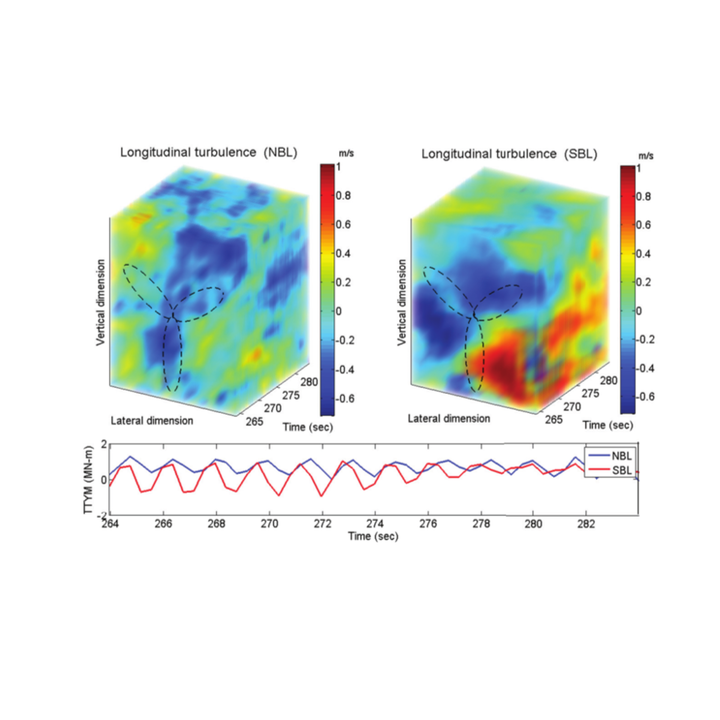On Wind Turbine Loads Assessment for Fatigue and Extreme Failure Limit States in Contrasting Atmospheric Stability Conditions

In the last decade, wind energy has witnessed faster growth than all other renewable energy sectors, with over 25% annual growth. While this is encouraging news, there are also three technical challenges facing wind energy. First, models used in the design process for simulating turbulence do not cover the range of atmospheric conditions likely to introduce critical events (e.g., high shear across a turbine rotor), especially in the Great Plains region. Second, wind turbines in service are aging, and failures, especially due to fatigue of composite materials used for blades, demand attention. Finally, refinements in design philosophy and practice are needed that are informed by state-of-the-art capabilities in atmospheric boundary layer modeling and stochastic wind turbine aeroelastic response simulation.
Intellectual Merit
This collaborative research seeks to extend the design paradigm for wind turbines to the reliability-based assessment of performance against fatigue and extreme limit states. Specifically, turbine loads will be evaluated under various suites of inflow turbulence flow fields generated with spatial structure that reflects a range of atmospheric stability conditions. The proposed work plan will focus on development of four dimensional synthetic turbulence time series based on tuning-free large-eddy simulations along with mesoscale model forecasts. These simulated flows will feed into aeroelastic models of utility-scale wind turbines whose response statistics will be developed using extensive time-domain simulations representing varying inflow conditions over the long term. Load extreme values will be analyzed in evaluating ultimate limit states, whereas cumulative damage and life assessment will be analyzed in evaluating the fatigue limit states. Refinements to current design specifications (e.g. by the International Electrotechnical Commission) will be proposed based on findings from this study.
This research is innovative and research is potentially transformative because it will use realistic atmospheric flows as the inflow conditions to the wind turbine simulation. Consequently, the proposed research will uniquely enable the simulation of wind turbine performance under realistic field conditions.
Broader Impacts
The education and outreach activities are centered on wind energy. The education plan will provide opportunities for students to develop skills in state-of-the-art computational techniques at the interface of atmospheric science and wind energy technology. Summer internship opportunities with Sandia National Laboratories in wind energy technology will be provided for undergraduate and graduate students. At the K-12 level, the PIs have established relationships with teachers at local school districts in Central and West Texas to create the Run on the Wind/Engineering a Clean Tomorrow summer camp.